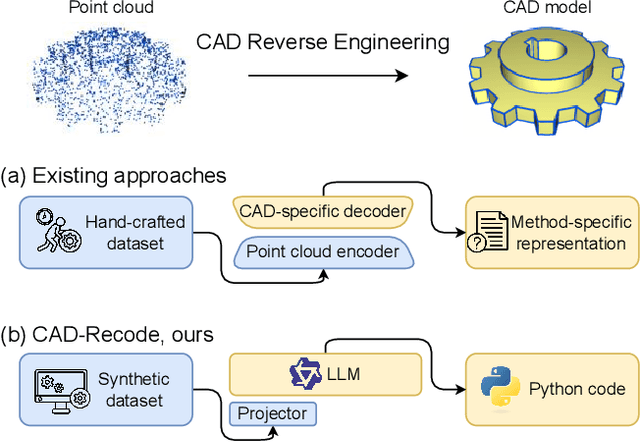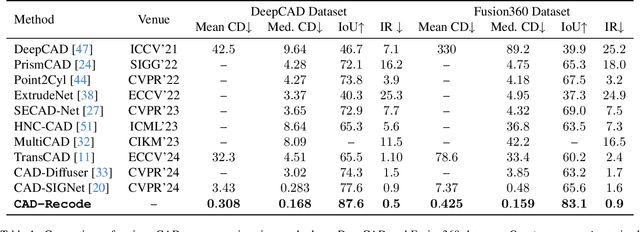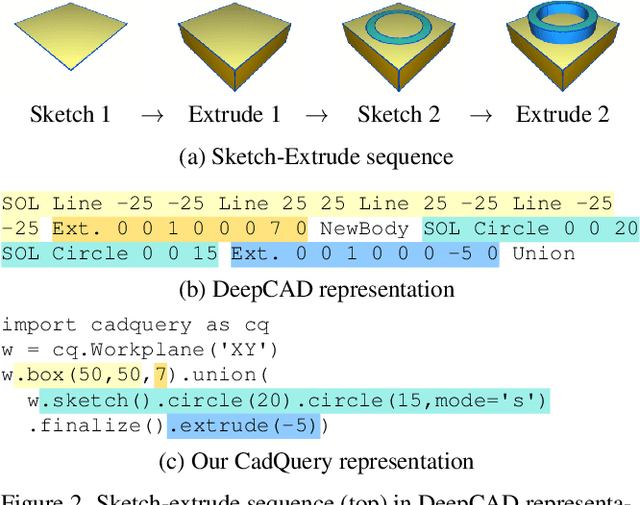Djamila Aouada
Zero-Shot Anomaly Detection in Battery Thermal Images Using Visual Question Answering with Prior Knowledge
May 22, 2025Abstract:Batteries are essential for various applications, including electric vehicles and renewable energy storage, making safety and efficiency critical concerns. Anomaly detection in battery thermal images helps identify failures early, but traditional deep learning methods require extensive labeled data, which is difficult to obtain, especially for anomalies due to safety risks and high data collection costs. To overcome this, we explore zero-shot anomaly detection using Visual Question Answering (VQA) models, which leverage pretrained knowledge and textbased prompts to generalize across vision tasks. By incorporating prior knowledge of normal battery thermal behavior, we design prompts to detect anomalies without battery-specific training data. We evaluate three VQA models (ChatGPT-4o, LLaVa-13b, and BLIP-2) analyzing their robustness to prompt variations, repeated trials, and qualitative outputs. Despite the lack of finetuning on battery data, our approach demonstrates competitive performance compared to state-of-the-art models that are trained with the battery data. Our findings highlight the potential of VQA-based zero-shot learning for battery anomaly detection and suggest future directions for improving its effectiveness.
MultiMAE Meets Earth Observation: Pre-training Multi-modal Multi-task Masked Autoencoders for Earth Observation Tasks
May 20, 2025Abstract:Multi-modal data in Earth Observation (EO) presents a huge opportunity for improving transfer learning capabilities when pre-training deep learning models. Unlike prior work that often overlooks multi-modal EO data, recent methods have started to include it, resulting in more effective pre-training strategies. However, existing approaches commonly face challenges in effectively transferring learning to downstream tasks where the structure of available data differs from that used during pre-training. This paper addresses this limitation by exploring a more flexible multi-modal, multi-task pre-training strategy for EO data. Specifically, we adopt a Multi-modal Multi-task Masked Autoencoder (MultiMAE) that we pre-train by reconstructing diverse input modalities, including spectral, elevation, and segmentation data. The pre-trained model demonstrates robust transfer learning capabilities, outperforming state-of-the-art methods on various EO datasets for classification and segmentation tasks. Our approach exhibits significant flexibility, handling diverse input configurations without requiring modality-specific pre-trained models. Code will be available at: https://github.com/josesosajs/multimae-meets-eo.
Domain Adaptation for Multi-label Image Classification: a Discriminator-free Approach
May 20, 2025Abstract:This paper introduces a discriminator-free adversarial-based approach termed DDA-MLIC for Unsupervised Domain Adaptation (UDA) in the context of Multi-Label Image Classification (MLIC). While recent efforts have explored adversarial-based UDA methods for MLIC, they typically include an additional discriminator subnet. Nevertheless, decoupling the classification and the discrimination tasks may harm their task-specific discriminative power. Herein, we address this challenge by presenting a novel adversarial critic directly derived from the task-specific classifier. Specifically, we employ a two-component Gaussian Mixture Model (GMM) to model both source and target predictions, distinguishing between two distinct clusters. Instead of using the traditional Expectation Maximization (EM) algorithm, our approach utilizes a Deep Neural Network (DNN) to estimate the parameters of each GMM component. Subsequently, the source and target GMM parameters are leveraged to formulate an adversarial loss using the Fr\'echet distance. The proposed framework is therefore not only fully differentiable but is also cost-effective as it avoids the expensive iterative process usually induced by the standard EM method. The proposed method is evaluated on several multi-label image datasets covering three different types of domain shift. The obtained results demonstrate that DDA-MLIC outperforms existing state-of-the-art methods in terms of precision while requiring a lower number of parameters. The code is made publicly available at github.com/cvi2snt/DDA-MLIC.
Uncertainty-Aware Knowledge Distillation for Compact and Efficient 6DoF Pose Estimation
Mar 17, 2025Abstract:Compact and efficient 6DoF object pose estimation is crucial in applications such as robotics, augmented reality, and space autonomous navigation systems, where lightweight models are critical for real-time accurate performance. This paper introduces a novel uncertainty-aware end-to-end Knowledge Distillation (KD) framework focused on keypoint-based 6DoF pose estimation. Keypoints predicted by a large teacher model exhibit varying levels of uncertainty that can be exploited within the distillation process to enhance the accuracy of the student model while ensuring its compactness. To this end, we propose a distillation strategy that aligns the student and teacher predictions by adjusting the knowledge transfer based on the uncertainty associated with each teacher keypoint prediction. Additionally, the proposed KD leverages this uncertainty-aware alignment of keypoints to transfer the knowledge at key locations of their respective feature maps. Experiments on the widely-used LINEMOD benchmark demonstrate the effectiveness of our method, achieving superior 6DoF object pose estimation with lightweight models compared to state-of-the-art approaches. Further validation on the SPEED+ dataset for spacecraft pose estimation highlights the robustness of our approach under diverse 6DoF pose estimation scenarios.
Removing Geometric Bias in One-Class Anomaly Detection with Adaptive Feature Perturbation
Mar 07, 2025



Abstract:One-class anomaly detection aims to detect objects that do not belong to a predefined normal class. In practice training data lack those anomalous samples; hence state-of-the-art methods are trained to discriminate between normal and synthetically-generated pseudo-anomalous data. Most methods use data augmentation techniques on normal images to simulate anomalies. However the best-performing ones implicitly leverage a geometric bias present in the benchmarking datasets. This limits their usability in more general conditions. Others are relying on basic noising schemes that may be suboptimal in capturing the underlying structure of normal data. In addition most still favour the image domain to generate pseudo-anomalies training models end-to-end from only the normal class and overlooking richer representations of the information. To overcome these limitations we consider frozen yet rich feature spaces given by pretrained models and create pseudo-anomalous features with a novel adaptive linear feature perturbation technique. It adapts the noise distribution to each sample applies decaying linear perturbations to feature vectors and further guides the classification process using a contrastive learning objective. Experimental evaluation conducted on both standard and geometric bias-free datasets demonstrates the superiority of our approach with respect to comparable baselines. The codebase is accessible via our public repository.
When Unsupervised Domain Adaptation meets One-class Anomaly Detection: Addressing the Two-fold Unsupervised Curse by Leveraging Anomaly Scarcity
Feb 28, 2025Abstract:This paper introduces the first fully unsupervised domain adaptation (UDA) framework for unsupervised anomaly detection (UAD). The performance of UAD techniques degrades significantly in the presence of a domain shift, difficult to avoid in a real-world setting. While UDA has contributed to solving this issue in binary and multi-class classification, such a strategy is ill-posed in UAD. This might be explained by the unsupervised nature of the two tasks, namely, domain adaptation and anomaly detection. Herein, we first formulate this problem that we call the two-fold unsupervised curse. Then, we propose a pioneering solution to this curse, considered intractable so far, by assuming that anomalies are rare. Specifically, we leverage clustering techniques to identify a dominant cluster in the target feature space. Posed as the normal cluster, the latter is aligned with the source normal features. Concretely, given a one-class source set and an unlabeled target set composed mostly of normal data and some anomalies, we fit the source features within a hypersphere while jointly aligning them with the features of the dominant cluster from the target set. The paper provides extensive experiments and analysis on common adaptation benchmarks for anomaly detection, demonstrating the relevance of both the newly introduced paradigm and the proposed approach. The code will be made publicly available.
Audio-visual Deepfake Detection With Local Temporal Inconsistencies
Jan 14, 2025



Abstract:This paper proposes an audio-visual deepfake detection approach that aims to capture fine-grained temporal inconsistencies between audio and visual modalities. To achieve this, both architectural and data synthesis strategies are introduced. From an architectural perspective, a temporal distance map, coupled with an attention mechanism, is designed to capture these inconsistencies while minimizing the impact of irrelevant temporal subsequences. Moreover, we explore novel pseudo-fake generation techniques to synthesize local inconsistencies. Our approach is evaluated against state-of-the-art methods using the DFDC and FakeAVCeleb datasets, demonstrating its effectiveness in detecting audio-visual deepfakes.
Vulnerability-Aware Spatio-Temporal Learning for Generalizable and Interpretable Deepfake Video Detection
Jan 02, 2025



Abstract:Detecting deepfake videos is highly challenging due to the complex intertwined spatial and temporal artifacts in forged sequences. Most recent approaches rely on binary classifiers trained on both real and fake data. However, such methods may struggle to focus on important artifacts, which can hinder their generalization capability. Additionally, these models often lack interpretability, making it difficult to understand how predictions are made. To address these issues, we propose FakeSTormer, offering two key contributions. First, we introduce a multi-task learning framework with additional spatial and temporal branches that enable the model to focus on subtle spatio-temporal artifacts. These branches also provide interpretability by highlighting video regions that may contain artifacts. Second, we propose a video-level data synthesis algorithm that generates pseudo-fake videos with subtle artifacts, providing the model with high-quality samples and ground truth data for our spatial and temporal branches. Extensive experiments on several challenging benchmarks demonstrate the competitiveness of our approach compared to recent state-of-the-art methods. The code is available at https://github.com/10Ring/FakeSTormer.
CAD-Recode: Reverse Engineering CAD Code from Point Clouds
Dec 18, 2024



Abstract:Computer-Aided Design (CAD) models are typically constructed by sequentially drawing parametric sketches and applying CAD operations to obtain a 3D model. The problem of 3D CAD reverse engineering consists of reconstructing the sketch and CAD operation sequences from 3D representations such as point clouds. In this paper, we address this challenge through novel contributions across three levels: CAD sequence representation, network design, and dataset. In particular, we represent CAD sketch-extrude sequences as Python code. The proposed CAD-Recode translates a point cloud into Python code that, when executed, reconstructs the CAD model. Taking advantage of the exposure of pre-trained Large Language Models (LLMs) to Python code, we leverage a relatively small LLM as a decoder for CAD-Recode and combine it with a lightweight point cloud projector. CAD-Recode is trained solely on a proposed synthetic dataset of one million diverse CAD sequences. CAD-Recode significantly outperforms existing methods across three datasets while requiring fewer input points. Notably, it achieves 10 times lower mean Chamfer distance than state-of-the-art methods on DeepCAD and Fusion360 datasets. Furthermore, we show that our CAD Python code output is interpretable by off-the-shelf LLMs, enabling CAD editing and CAD-specific question answering from point clouds.
CAD-Assistant: Tool-Augmented VLLMs as Generic CAD Task Solvers?
Dec 18, 2024Abstract:We propose CAD-Assistant, a general-purpose CAD agent for AI-assisted design. Our approach is based on a powerful Vision and Large Language Model (VLLM) as a planner and a tool-augmentation paradigm using CAD-specific modules. CAD-Assistant addresses multimodal user queries by generating actions that are iteratively executed on a Python interpreter equipped with the FreeCAD software, accessed via its Python API. Our framework is able to assess the impact of generated CAD commands on geometry and adapts subsequent actions based on the evolving state of the CAD design. We consider a wide range of CAD-specific tools including Python libraries, modules of the FreeCAD Python API, helpful routines, rendering functions and other specialized modules. We evaluate our method on multiple CAD benchmarks and qualitatively demonstrate the potential of tool-augmented VLLMs as generic CAD task solvers across diverse CAD workflows.
 Add to Chrome
Add to Chrome Add to Firefox
Add to Firefox Add to Edge
Add to Edge